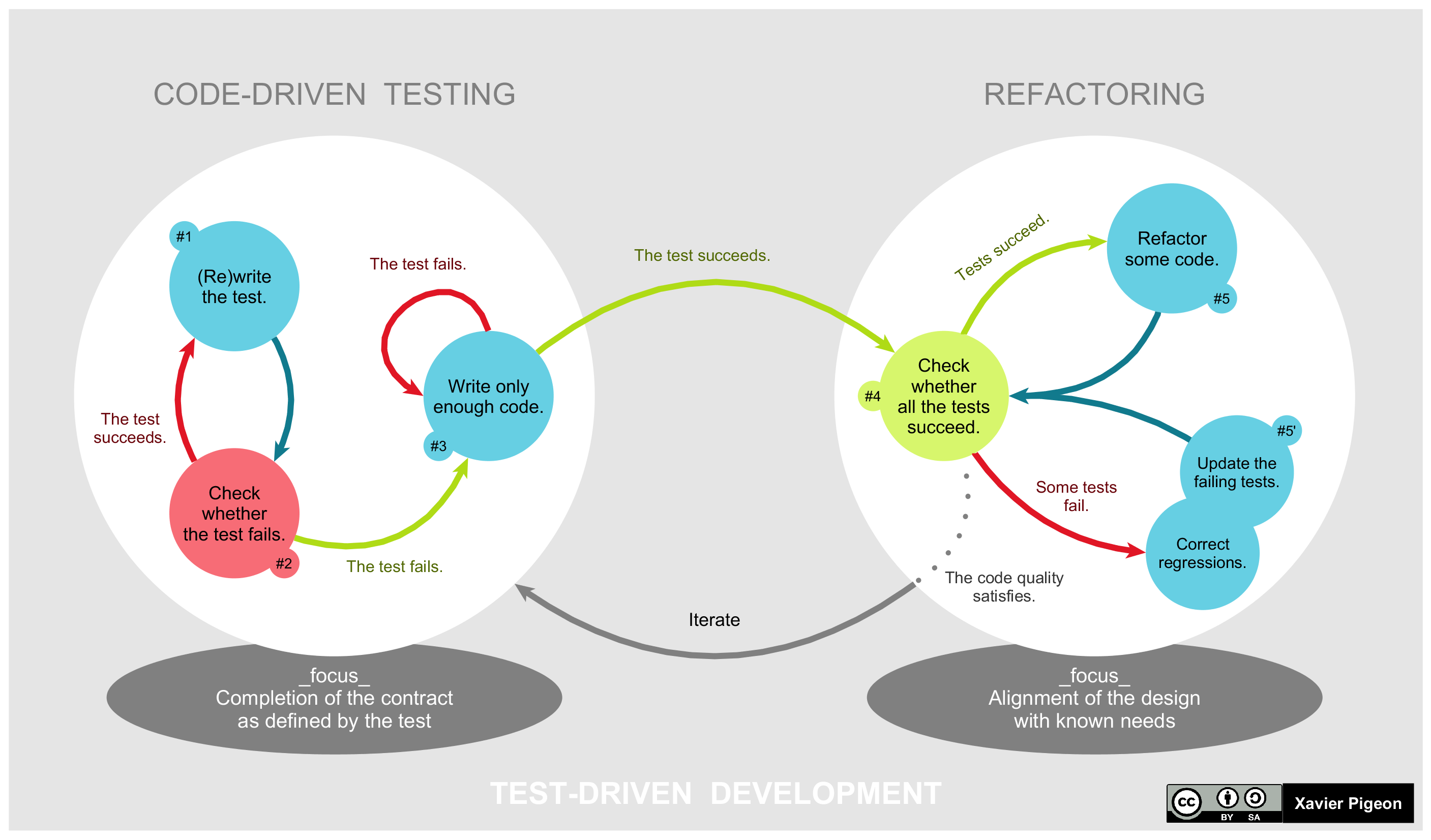|
Robot Framework
Robot Framework is a generic software test automation Software framework, framework for acceptance testing and acceptance test-driven development (ATDD). It is a keyword-driven testing framework that uses tabular test data syntax. History The basic ideas for Robot Framework were shaped in Pekka Klärck's masters thesis in 2005. The first version was developed at Nokia Networks the same year. Version 2.0 was released as Open-source software, open source software June 24, 2008 and version 3.0.2 was released February 7, 2017. The framework is written using the Python (programming language), Python programming language and has an active community of contributors. It is released under Apache License 2.0 and can be downloaded from robotframework.org. In 2020 survey it scored 8 among 12 test automation frameworks, with 3 % of respondents using it. In 2021 it had fallen to 18 among 22 with 2 % usage. Description Test cases are written using a keyword-testing methodology written in ... [...More Info...] [...Related Items...] OR: [Wikipedia] [Google] [Baidu] [Amazon] |
"Hello, World!" Program
A "Hello, World!" program is usually a simple computer program that emits (or displays) to the screen (often the Console application, console) a message similar to "Hello, World!". A small piece of code in most general-purpose programming languages, this program is used to illustrate a language's basic Syntax (programming languages), syntax. Such a program is often the first written by a student of a new programming language, but it can also be used as a sanity check to ensure that the computer software intended to Compiler, compile or run source code is correctly installed, and that its operator understands how to use it. History While several small test programs have existed since the development of programmable computers, the tradition of using the phrase "Hello, World!" as a test message was influenced by an example program in the 1978 book ''The C Programming Language'', with likely earlier use in BCPL. The example program from the book prints , and was inherited from a 197 ... [...More Info...] [...Related Items...] OR: [Wikipedia] [Google] [Baidu] [Amazon] |
Test-driven Development
Test-driven development (TDD) is a way of writing source code, code that involves writing an test automation, automated unit testing, unit-level test case that fails, then writing just enough code to make the test pass, then refactoring both the test code and the production code, then repeating with another new test case. Alternative approaches to writing automated tests is to write all of the production code before starting on the test code or to write all of the test code before starting on the production code. With TsDD, both are written together, therefore shortening debugging time necessities. TDD is related to the test-first programming concepts of extreme programming, begun in 1999, but more recently has created more general interest in its own right.Newkirk, JW and Vorontsov, AA. ''Test-Driven Development in Microsoft .NET'', Microsoft Press, 2004. Programmers also apply the concept to improving and software bug, debugging legacy code developed with older techniques.Feat ... [...More Info...] [...Related Items...] OR: [Wikipedia] [Google] [Baidu] [Amazon] |
Data-driven Testing
Data-driven testing (DDT), also known as table-driven testing or parameterized testing, is a software testing methodology that is used in the testing of computer software to describe testing done using a table of conditions directly as test inputs and verifiable outputs as well as the process where test environment settings and control are not hard-coded. In the simplest form the tester supplies the inputs from a row in the table and expects the outputs which occur in the same row. The table typically contains values which correspond to boundary or partition input spaces. In the control methodology, test configuration is "read" from a database. Introduction In the testing of software or programs, several methodologies are available for implementing this testing. Each of these methods co-exist because they differ in the effort required to create and subsequently maintain. The advantage of Data-driven testing is the ease to add additional inputs to the table when new partitions are di ... [...More Info...] [...Related Items...] OR: [Wikipedia] [Google] [Baidu] [Amazon] |
Keyword-driven Testing
Keyword-driven testing, also known as action word based testing (not to be confused with action driven testing), is a software testing methodology suitable for both manual and automated testing. This method separates the documentation of test casesincluding both the data and functionality to usefrom the prescription of the way the test cases are executed. As a result, it separates the test creation process into two distinct stages: a design and development stage, and an execution stage. The design substage covers the requirement analysis and assessment and the data analysis, definition, and population. Overview This methodology uses keywords (or action words) to symbolize a functionality to be tested, such as Enter Client. The keyword Enter Client is defined as the set of actions that must be executed to enter a new client in the database. Its keyword documentation would contain: * the starting state of the system under test (SUT) * the window or menu to start from * the keys or m ... [...More Info...] [...Related Items...] OR: [Wikipedia] [Google] [Baidu] [Amazon] |
Acceptance Testing
In engineering and its various subdisciplines, acceptance testing is a test conducted to determine if the requirements of a specification or contract are met. It may involve chemical tests, physical tests, or performance tests. In systems engineering, it may involve black-box testing performed on a system (for example: a piece of software, lots of manufactured mechanical parts, or batches of chemical products) prior to its delivery. In software testing, the ISTQB defines ''acceptance testing'' as: The final test in the QA lifecycle, user acceptance testing, is conducted just before the final release to assess whether the product or application can handle real-world scenarios. By replicating user behavior, it checks if the system satisfies business requirements and rejects changes if certain criteria are not met. Some forms of acceptance testing are, user acceptance testing (UAT), end-user testing, operational acceptance testing (OAT), acceptance test-driven developm ... [...More Info...] [...Related Items...] OR: [Wikipedia] [Google] [Baidu] [Amazon] |
JavaScript
JavaScript (), often abbreviated as JS, is a programming language and core technology of the World Wide Web, alongside HTML and CSS. Ninety-nine percent of websites use JavaScript on the client side for webpage behavior. Web browsers have a dedicated JavaScript engine that executes the client code. These engines are also utilized in some servers and a variety of apps. The most popular runtime system for non-browser usage is Node.js. JavaScript is a high-level, often just-in-time–compiled language that conforms to the ECMAScript standard. It has dynamic typing, prototype-based object-orientation, and first-class functions. It is multi-paradigm, supporting event-driven, functional, and imperative programming styles. It has application programming interfaces (APIs) for working with text, dates, regular expressions, standard data structures, and the Document Object Model (DOM). The ECMAScript standard does not include any input/output (I/O), such as netwo ... [...More Info...] [...Related Items...] OR: [Wikipedia] [Google] [Baidu] [Amazon] |
Perl
Perl is a high-level, general-purpose, interpreted, dynamic programming language. Though Perl is not officially an acronym, there are various backronyms in use, including "Practical Extraction and Reporting Language". Perl was developed by Larry Wall in 1987 as a general-purpose Unix scripting language to make report processing easier. Since then, it has undergone many changes and revisions. Perl originally was not capitalized and the name was changed to being capitalized by the time Perl 4 was released. The latest release is Perl 5, first released in 1994. From 2000 to October 2019 a sixth version of Perl was in development; the sixth version's name was changed to Raku. Both languages continue to be developed independently by different development teams which liberally borrow ideas from each other. Perl borrows features from other programming languages including C, sh, AWK, and sed. It provides text processing facilities without the arbitrary data-length limits of ... [...More Info...] [...Related Items...] OR: [Wikipedia] [Google] [Baidu] [Amazon] |
NET Framework
The .NET Framework (pronounced as "''dot net''") is a proprietary software framework developed by Microsoft that runs primarily on Microsoft Windows. It was the predominant implementation of the Common Language Infrastructure (CLI) until being superseded by the cross-platform .NET project. It includes a large class library called Framework Class Library (FCL) and provides language interoperability (each language can use code written in other languages) across several programming languages. Programs written for .NET Framework execute in a software environment (in contrast to a computer hardware, hardware environment) named the Common Language Runtime (CLR). The CLR is an process virtual machine, application virtual machine that provides services such as security, memory management, and exception handling. As such, computer code written using .NET Framework is called "managed code". FCL and CLR together constitute the .NET Framework. FCL provides the user interface, data access, d ... [...More Info...] [...Related Items...] OR: [Wikipedia] [Google] [Baidu] [Amazon] |
Java (programming Language)
Java is a High-level programming language, high-level, General-purpose programming language, general-purpose, Memory safety, memory-safe, object-oriented programming, object-oriented programming language. It is intended to let programmers ''write once, run anywhere'' (Write once, run anywhere, WORA), meaning that compiler, compiled Java code can run on all platforms that support Java without the need to recompile. Java applications are typically compiled to Java bytecode, bytecode that can run on any Java virtual machine (JVM) regardless of the underlying computer architecture. The syntax (programming languages), syntax of Java is similar to C (programming language), C and C++, but has fewer low-level programming language, low-level facilities than either of them. The Java runtime provides dynamic capabilities (such as Reflective programming, reflection and runtime code modification) that are typically not available in traditional compiled languages. Java gained popularity sh ... [...More Info...] [...Related Items...] OR: [Wikipedia] [Google] [Baidu] [Amazon] |
Firefox
Mozilla Firefox, or simply Firefox, is a free and open-source web browser developed by the Mozilla Foundation and its subsidiary, the Mozilla Corporation. It uses the Gecko rendering engine to display web pages, which implements current and anticipated web standards. Firefox is available for Windows 10 or later versions of Windows, macOS, and Linux. Its unofficial ports are available for various Unix and Unix-like operating systems, including FreeBSD, OpenBSD, NetBSD, and other operating systems, such as ReactOS. Firefox is also available for Android and iOS. However, as with all other iOS web browsers, the iOS version uses the WebKit layout engine instead of Gecko due to platform requirements. An optimized version is also available on the Amazon Fire TV as one of the two main browsers available with Amazon's Silk Browser. Firefox is the spiritual successor of Netscape Navigator, as the Mozilla community was created by Netscape in 1998, before its acqui ... [...More Info...] [...Related Items...] OR: [Wikipedia] [Google] [Baidu] [Amazon] |
WebKit
WebKit is a browser engine primarily used in Apple's Safari web browser, as well as all web browsers on iOS and iPadOS. WebKit is also used by the PlayStation consoles starting with the PS3, the Tizen mobile operating systems, the Amazon Kindle e-book reader, Nintendo consoles starting with the 3DS Internet Browser, GNOME Web, and the discontinued BlackBerry Browser. WebKit started as a fork of the KHTML and KJS libraries from KDE, and has since been further developed by KDE contributors, Apple, Google, Nokia, Bitstream, BlackBerry, Sony, Igalia, and others. WebKit supports macOS, Windows, Linux, and various other Unix-like operating systems. On April 3, 2013, Google announced that it had forked WebCore, a component of WebKit, to be used in future versions of Google Chrome and the Opera web browser, under the name Blink. Its JavaScript engine, JavascriptCore, also powers the Bun server-side JS runtime, as opposed to V8 used by Node.js, Deno, and Blink. ... [...More Info...] [...Related Items...] OR: [Wikipedia] [Google] [Baidu] [Amazon] |





